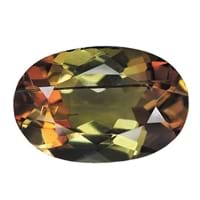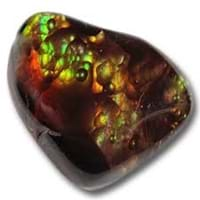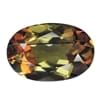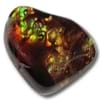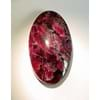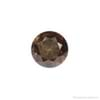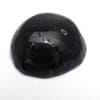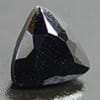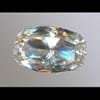Origin
Spain, Brazil, USA, Sri Lanka, Burma, Color: strongly pleochroic, reddish brown, pink / yellowish green, Hardness: 7 7.5, Refractive index: 1.63 1.65, Density: 3.13 3.21, Chemical composition: Al2SiO5, Crystal structure: orthorhombic, Lustre: vitreous, greasy, Origins: Spain, Brazil, USA, Sri Lanka, Burma. Discovered in Andalusia (Spain), the andalusite stone is relatively rare, with big crystals over 10 ct. especially rare. Due to its remarkable pleochroism effect, the stone is highly valued by collectors., brown
Southern and central Africa
Color
Brown, pink, Violet, Yellow, Green, White, gray, Colorless, Green, gray, Brown, Red
Brown, Red, Blue, Yellow, Red, orange
Streak
White
Not Available
For which Rashi?
All
Not Available
Planet
Venus
Not Available
Element of Planets
Not Available
Not Available
Finger
Not Available
Not Available
Ring Metal
Not Available
Not Available
Energy
Projective, Receptive
Not Available
Deities
Not Available
Not Available
Not to wear with
Not Available
Not Available
Powers
Not Available
Not Available
Planetary
Not Available
Not Available
Talisman
Not Available
Not Available
Tenacity
Not Available
Not Available
Solubility
Not Available
Not Available
Durability
Not Available
Not Available
Specific Gravity
3.05-3.21
2.60-2.64
Fracture
Uneven, Subconchoidal, Uneven, Subconchoidal, Splintery, UnevenArthur Thomas, Gemstones (2009)
Uneven, Splintery, Conchoidal, Uneven, Splintery, Conchoidal, UnevenWalter Schumann, Gemstones of the world (2001)
Cleavage
Good on {110}, poor on {100}
Absent
Chemical Composition
Al 2SiO 5Michael OâDonoghue , Gems, Sixth edition (2006) More from other references
SiO 2Arthur Thomas , Gemstones (2009)
Luster
Vitreous, Greasy
Waxy, Vitreous, Greasy, Silky
Pleochroism
strongly trichroic
AbsentWalter Schumann
Transparency
Transparent, Translucent
Translucent
Refractive Index
1.627-1.650
1.530-1.543
Optic Character
Not Available
Not Available
Crystal System
Orthorhombic
Trigonal
Birefringence
0.009-0.010
0.003-0.009
Clarity
Transparent
Translucent
Neurological
Not Available
Not Available
Cardiovascular
Not Available
Not Available
Respiratory
Not Available
Not Available
Reproductive
Not Available
Not Available
Digestive
Not Available
Not Available
Psychology
Not Available
Not Available
Healing
Not Available
Not Available
Qualities Associated
Not Available
Not Available
Andalusite Vs Fire Agate Fracture
Fracture is an important parameter when you compare Andalusite and Fire Agate Physical Properties. It is necessary to understand the significance of these properties, before you compare Andalusite Vs Fire Agate fracture. Whenever a gemstone chip breaks, it leaves a characteristic line along its breakage. Such lines are known as fracture and are used to identify the gemstones in their initial stages of production when they are in the form of rough minerals. Fracture is usually described with the terms “fibrous” and “splintery” to denote a fracture that usually leaves elongated and sharp edges. Fracture observed in Andalusite is Gemstones (2009), Splintery, Subconchoidal, Subconchoidal, Uneven, Uneven and UnevenArthur Thomas. Fire Agate fracture is Conchoidal, Conchoidal, Gemstones of the world (2001), Splintery, Splintery, Uneven, Uneven and UnevenWalter Schumann.
Andalusite Vs Fire Agate Luster
A primary knowledge about Andalusite vs Fire Agate luster is useful in apparent identifications of these gemstones. Luster is the measure of light that gets reflected when incident on a finished cut gemstone. There are two major types of lusters: Silky and Adamantine. Since luster varies between two crystals of even the same gemstone, luster is limited to basic identification criteria. Andalusite exhibits Greasy and Vitreous luster. Fire Agate, on other hand, exhibits Greasy, Silky, Vitreous and Waxy luster.
